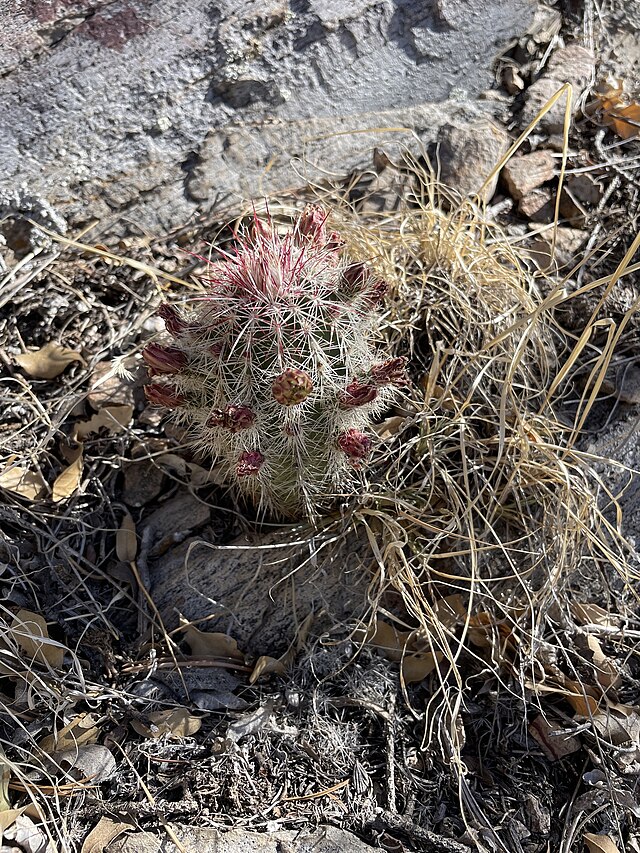Echinocereus chloranthus var rhyolithensis seeds
Accepted Scientific Name:
Echinocereus chloranthus Engelm. var. rhyolithensis
Synonyms:
Sometimes grouped under Echinocereus viridiflorus complex
Common Names:
Rhyolite Greenflower Cactus, Green-flowered Hedgehog (Rhyolite form)
Plant Origin:
Echinocereus chloranthus var rhyolithensis seeds
Echinocereus chloranthus var. rhyolithensis – A Rare Green-Flowered Beauty from West Texas
Echinocereus chloranthus var. rhyolithensis is a rare, compact cactus variety native to the rugged rhyolite hillsides of western Texas, especially within the Big Bend region. A local form of the Echinocereus chloranthus species, this variety is prized for its unique green flowers, petite size, cold hardiness, and ability to thrive in harsh, rocky environments. As a seed-grown specimen, it offers an exciting opportunity to cultivate a wild gem of the American Southwest in a rock garden, alpine trough, or desert container collection.
This variety typically grows as a small, solitary to clumping cactus, reaching just 2–4 inches in height and width. It forms dense, rounded stems with pronounced ribs and spines that can vary in color from pale tan to reddish-brown or dark gray. The spines often create a star-like pattern across the stem, adding year-round interest even when the plant is not in bloom. Its small size makes it ideal for tight spaces, pots, or collectors with limited growing area.
What truly sets Echinocereus chloranthus var. rhyolithensis apart is its unusual greenish to yellow-green flowers, which are rare among cacti. Blooming typically in late spring to early summer, these flowers are modest in size (1–2 inches across) but rich in character. They appear at the crown or upper sides of the stem and often feature darker green or reddish central highlights. The blooms are lightly fragrant and pollinated by native bees, offering both aesthetic and ecological value.
This cactus is exceptionally well-adapted to cold desert environments, tolerating temperatures well below freezing with minimal protection. It naturally grows in rocky, mineral-rich soils derived from volcanic rhyolite, which provide sharp drainage and excellent root aeration. In cultivation, it performs best in well-drained cactus or alpine mixes and appreciates full sun exposure. Its drought tolerance is excellent—perfect for xeriscapes or areas where supplemental water is limited.
From seed, Echinocereus chloranthus var. rhyolithensis grows slowly but steadily. Patience is rewarded with a hardy, attractive cactus that is as tough as it is unique. It is perfect for collectors seeking something out of the ordinary, as well as gardeners looking to diversify their cold-hardy cactus selections with a species that brings a rare bloom color and native Texan heritage.
Why Grow Echinocereus chloranthus var. rhyolithensis from Seed?
-
Rare green-flowered variety with unique regional character
-
Native to the rhyolite-rich deserts of West Texas
-
Compact and clumping form suitable for small spaces and containers
-
Exceptionally cold-hardy—thrives in USDA Zones 5–9
-
Requires little water and minimal maintenance once established
-
Excellent candidate for rock gardens, alpine plantings, or troughs
-
Easy to grow from seed with patience and proper drainage
Growing Information
-
Light: Full sun to light shade; intense sun encourages compact growth
-
Soil: Sharp-draining cactus or mineral-based soil; add pumice or grit for best results
-
Water: Allow to dry completely between waterings; avoid excess moisture in winter
-
Temperature: Hardy to around -10°F (-23°C); dry winters improve cold tolerance
-
Fertilizer: Light feeding during active growth (spring–summer) is optional
-
Propagation: By seed or clumping offsets (in mature specimens)
With its rugged beauty, subtle green blooms, and exceptional adaptability, Echinocereus chloranthus var. rhyolithensis is a must-have for serious cactus collectors and hardy succulent growers alike. Its small stature, regional rarity, and unusual floral color make it a standout in any cactus garden or alpine collection. When grown from seed, each plant carries the unique character of its wild ancestors, making it a true connection to the Texan desert landscape.
